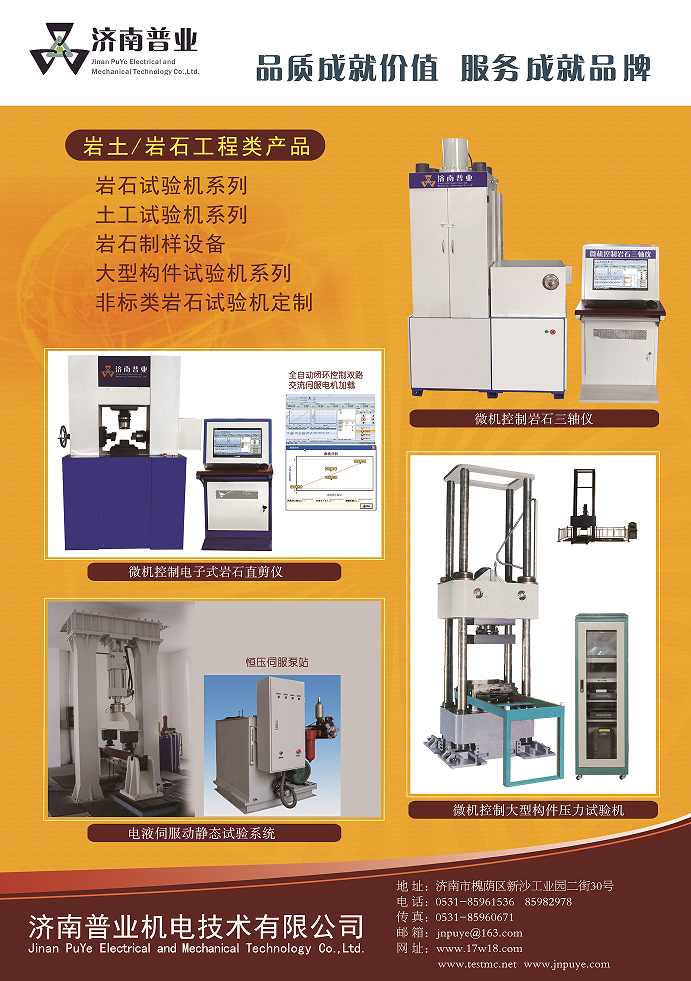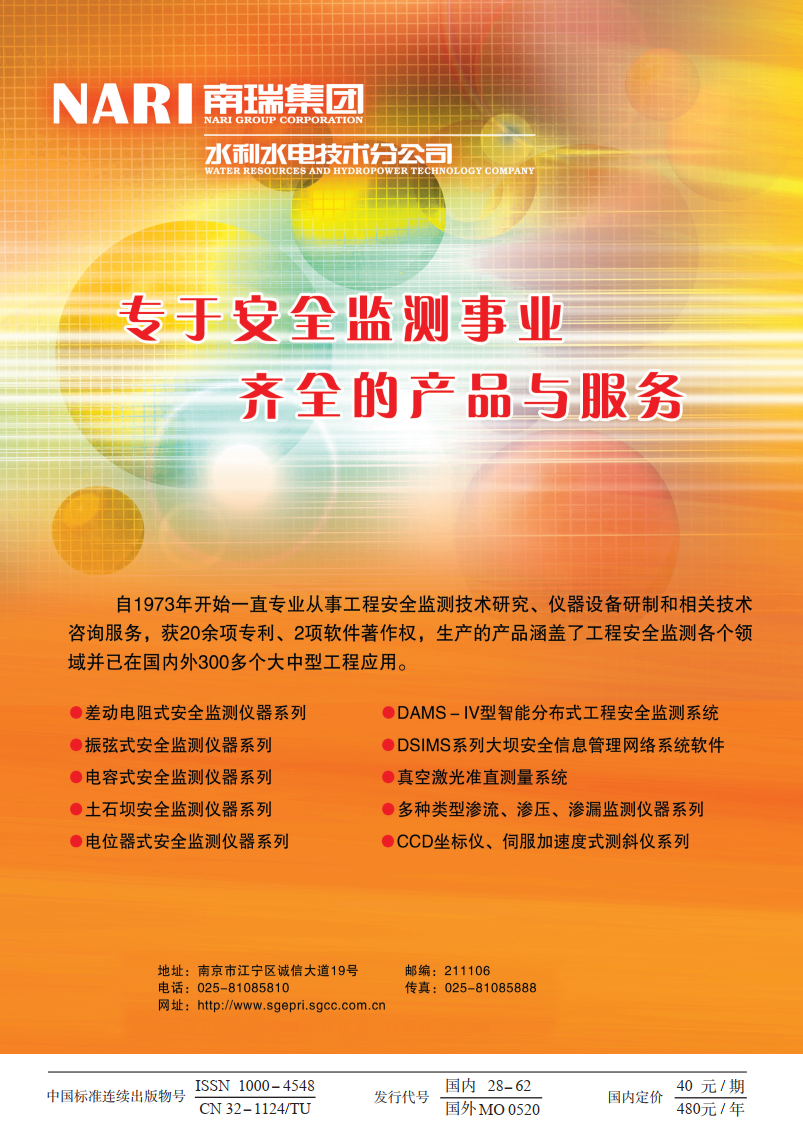Spatial block identification method based on meshing and its engineering application
-
摘要: 为了解决复杂几何边界条件下有限结构面的全空间块体识别问题,提出有向面单元的几何建模概念,并将网格划分思想引入块体理论中.首先利用空间正交网格将岩体离散为若干个小单元块体,然后依次添加结构面,对单元进行接触性判断及切割,最后去除网格合并单元,形成独立的空间块体.针对块体的切割,给出了平面对任意形态块体的切割方法.针对单元块体的合并,提出了以有向边合并为基础的块体合并方法,将同向面,异向面合并方法统一.研究表明该方法具有可动态添加有限结构面,建立复杂几何模型,识别块体的形态数量不受限制,编程简单等优点.结合辽宁某隧道工程实例,利用本研究成果识别出全空间内所有独立块体,并进一步提供围岩周围关键块体的基本信息,证明了其应用于复杂岩石块体识别的有效性和优越性,为确保岩体工程的安全生产提供技术支持.Abstract: In order to solve the issue of spatial block identification of finite structural planes under complex geometrical boundaries, the geometric modeling concept of sagittal planes is proposed and the meshing method is introduced to the block theory. Firstly, the rock mass is meshed into small independent elements. Then the structural planes are added orderly and the elements are cut after the contact judgment. Finally, the independent spatial blocks are formed when the mesh is removed and the elements are united. The cutting method of blocks with arbitrary configurations is given by planes. Based on the merger of directional edge, the merging method of the same direction and opposite surface is united aiming at block merging. The results show that it has good advantages for the dynamical appending of structural planes and the building of complex geometry model. Moreover, there is no limit to the form and number of block identification, and the programming progress is simple. The prosposed method is further illustrated with its application to tunnel engineering in Liaoning Province. All of the independent spatial blocks are identified, and then the information of the key blocks is obtained. Its effectiveness and superiority in complex block identification is demonstrated through the engineering practice. It may provide technical support for the safety production of rock mass engineering.
-
Keywords:
- meshing /
- block identification /
- element /
- block merging /
- structural plane
-
[1] SHI G H, GOODMAN R E. Two-dimensional discontinuous deformation analysis[J]. International Journal for Numerical and Analytical Methods in Geomechanics, 1985, 9: 541-556. [2] GOODMAN R E, SHI G H. Block theory and its application to rock engineering[M]. Englewood Cliff: Prentice Hall, 1985. [3] BOYLE W J, GOODMAN R E, YOW J L. Field cases using key block theory[C]// Proceedings of the International Symposium on Large Rock Caverns. Helsinki, 1986: 88-95. [4] IKEGAWA Y, HUDSON J A. A novel automatic identification system for three-dimensional multi-block systems[J]. Engineering Computations, 1992, 9(2): 169-179. [5] 汪卫明, 陈胜宏. 三维岩石块体系统的自动识别方法[J]. 武汉水利电力大学学报, 1998, 31(50): 51-55. (WANG Wei-ming, CHEN Sheng-hong. Automatic identification method for three-dimensional rock block systems[J]. Journal of Wuhan University of Hydraulic and Electric Engineering, 1998, 31(50): 51-55. (in Chinese)) [6] 卢 波, 陈剑平, 王良奎. 基于三维网络模拟基础的复杂有限块体的自动搜索及其空间几何形态的判定[J]. 岩石力学与工程学报, 2002, 21(8): 1232-1238. (LU Bo, CHEN Jian-ping, WANG Liang-kui. Automatic seeking for complex finite rock block and judgment of its spatial geometrical shape based on 3D network modeling[J]. Chinese Journal of Rock Mechanics and Engineering, 2002, 21(8): 1232-1238. (in Chinese)) [7] 邬爱清, 张奇华. 岩石块体理论中三维随机块体几何搜索[J]. 水利学报, 2005, 36(4): 426-432. (WU Ai-qing, ZHANG Qi-hua. Geometric identification of stochastic block in block theory[J]. Journal of Hydraulic Engineering, 2005, 36(4): 426-432. (in Chinese)) [8] 张奇华. 基于块体加与块体减算法的岩石块体几何形态分析[J]. 水利学报, 2006, 37(4): 418-424. (ZHANG Qi-hua. Morphological analysis of rock blocks by block adding subtracting method[J]. Journal of Hydraulic Engineering, 2006, 37(4): 418-424. (in Chinese)) [9] 钟登华, 鲁文妍, 刘 杰, 等. 基于三维地质模型的地下洞室曲面块体分析[J]. 岩石力学与工程学报, 2011, 30(增刊2): 3696-3702. (ZHONG Deng-hua, LU Wen-yan, LIU Jie, et al. Surface-block analysis of underground cavern based on 3D geological modeling[J]. Chinese Journal of Rock Mechanics and Engineering, 2011, 30(S2): 3696-3702. (in Chinese)) [10] 于青春, 薛果夫, 陈德基. 裂隙岩体一般块体理论[M]. 北京: 中国水利水电出版社, 2007. (YU Qing-chun, XUE Guo-fu, CHEN De-ji. General block theory for fractured rock mass[M]. Beijing: China Water Power Press, 2007. (in Chinese)) [11] WU J, ZHANG Z X, KWOK C Y. Stability analysis of rock blocks around a cross-harbor tunnel using the improved morphological visualization method[J]. Engineering Geology, 2015, 187: 10-31. [12] ZHANG Z X, LEI Q H. Object-oriented modeling for three-dimensional multi-block systems[J]. Computers and Geotechnics, 2013, 48: 208-227. [13] 王述红, 杨勇, 王 洋, 等. 基于数字摄像测量的开挖空间模型及不稳块体的快速识别[J]. 岩石力学与工程学报, 2010, 29(增刊1): 3432-3438. (WANG Shu-hong, YANG Yong, WANG Yang, et al. Spatial modeling and quick identification of unstable rock blocks based on digital photogrammetry[J]. Chinese Journal of Rock Mechanics and Engineering, 2010, 29(S1): 3432-3438. (in Chinese)) [14] WANG Shu-hong, HUANG Run-qiu, NI Peng-peng, et al. Fracture behavior of intact rock using acoustic emission: experimental observation and realistic modeling[J]. Geotechnical Testing Journal, 2013, 36(6): 903-914. [15] WANG Shu-hong, NI Peng-peng, GUO Mu-dan. Spatial characterization of joint planes and stability analysis of tunnel blocks[J]. Tunnelling and Underground Space Technology, 2013, 38: 357-367 -
期刊类型引用(22)
1. 卢汉青,包卫星,陈锐,郭强,尹严. 基于核磁共振技术的冻融板岩损伤特性试验研究. 地下空间与工程学报. 2025(01): 78-86+99 .  百度学术
百度学术
2. 贾朝军,庞锐锋,俞隽,雷明锋,李忠. 基于离散元的岩石冻融损伤劣化机制研究. 岩土力学. 2024(02): 588-600 .  百度学术
百度学术
3. 赵越,司运航,张译丹,赵京禹. 水化-冻融耦合条件下大理岩蠕变损伤本构模型. 吉林大学学报(地球科学版). 2024(01): 231-241 .  百度学术
百度学术
4. 樊赖宇,吴志军,储昭飞,翁磊,王智洋,刘泉声,陈结. 动态冲击下红砂岩蠕变特性及损伤本构模型. 岩土力学. 2024(06): 1608-1622 .  百度学术
百度学术
5. 刘文博,张树光,黄翔,刘轶品. 基于蠕变曲线对称的蠕变模型研究及参数敏感性分析. 煤炭科学技术. 2024(07): 48-56 .  百度学术
百度学术
6. 宋勇军,操警辉,程柯岩,杨慧敏,毕冉,张琨. 砂岩冻结/解冻过程蠕变特性研究. 水文地质工程地质. 2024(06): 93-103 .  百度学术
百度学术
7. 王波,任永政,田志银,马世纪,王军,黄万朋,王灵. 流变扰动条件下岩石微观损伤试验研究. 煤炭学报. 2024(S2): 852-861 .  百度学术
百度学术
8. 杨志全,甘进,樊详珑,朱颖彦,杨溢,丁渝池. 岩石冻融损伤机理研究进展及展望. 防灾减灾工程学报. 2023(01): 176-188 .  百度学术
百度学术
9. 赵志波. 冻融条件下隧道围岩单轴蠕变力学特性试验及本构模型. 黑龙江科技大学学报. 2023(02): 299-305 .  百度学术
百度学术
10. 苗浩东,任富强. 冻融循环作用下不同含水率砂岩抗拉特性研究. 工矿自动化. 2023(05): 133-138+152 .  百度学术
百度学术
11. 闫建兵,张小强,宋选民,王开,姜玉龙,岳少飞. 低围压条件下无烟煤三轴蠕变特性试验研究(英文). Journal of Central South University. 2023(05): 1618-1630 .  百度学术
百度学术
12. 张卫泽,王琳庆,郭文重,陈雷. 基于Weibull分布的红砂岩三轴蠕变试验及模型研究. 水文地质工程地质. 2023(04): 137-148 .  百度学术
百度学术
13. 赵越,李磊,闫晗,肖万山,苏艳军. 水化-冻融耦合作用下大理岩单轴蠕变力学特性. 吉林大学学报(地球科学版). 2023(04): 1195-1203 .  百度学术
百度学术
14. 包卫星,卢汉青,郭强,尹严. 新疆高寒炭质板岩隧道围岩冻融劣化特性研究. 工程地质学报. 2023(04): 1213-1224 .  百度学术
百度学术
15. 王丹,冯子军,张子翔. 砂岩的三维非线性损伤蠕变特性. 矿业研究与开发. 2023(10): 139-144 .  百度学术
百度学术
16. 付宏渊,段鑫波,史振宁. 冻融循环下粉砂质泥岩强度劣化特性及细观机理研究. 工程地质学报. 2023(06): 1833-1841 .  百度学术
百度学术
17. 张进元. 冻融作用下公路块石路基损伤特性研究. 青海交通科技. 2023(06): 131-134 .  百度学术
百度学术
18. 王璐. 二次损伤岩石的蠕变研究综述. 工程技术研究. 2022(07): 39-42 .  百度学术
百度学术
19. 唐志强,吉锋,许汉华,冯文凯,何萧. 豫南燕山期花岗岩蠕变特性及非线性蠕变损伤模型. 科学技术与工程. 2022(16): 6421-6429 .  百度学术
百度学术
20. 尹彦波. 不同应变率下冻融损伤大理岩的动态压缩特性研究. 矿业研究与开发. 2022(08): 139-145 .  百度学术
百度学术
21. 马志奇,杨小彬,刘腾辉,李志辉. 粒径大小对颗粒堆积体Burgers模型蠕变参数相似试验研究. 矿业科学学报. 2022(06): 730-737 .  百度学术
百度学术
22. 王飞,高明忠,邱冠豪,汪亦显,周昌台,王之禾. 初始损伤–载荷–冻融作用下红砂岩的孔隙结构及力学特性. 工程科学与技术. 2022(06): 194-203 .  百度学术
百度学术
其他类型引用(43)








 下载:
下载:
